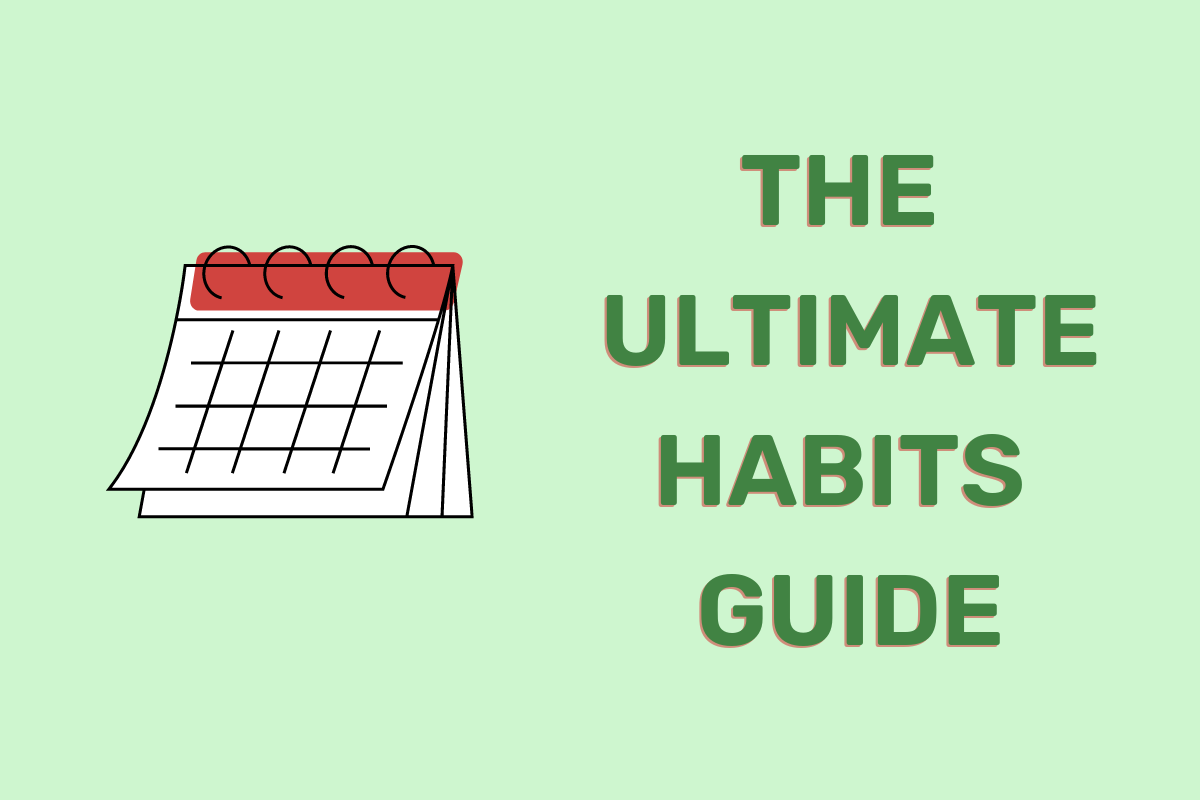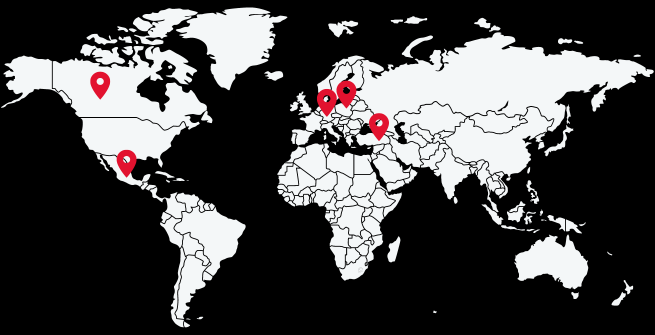What is a habit?
Your habits are everything. They are how you spend your time, how you expend your energy, where you spend your money and how you share your love to yourself or otherwise.
Some habits are customs ingrained from childhood or are things we do on autopilot as a result of our environment, while others are rituals we developed along the way, both good and bad. Whether you realize it or not, your habits are basically how you choose to live your life.
The hard truth is this:
Habits are the repeated actions we make in our everyday lives…
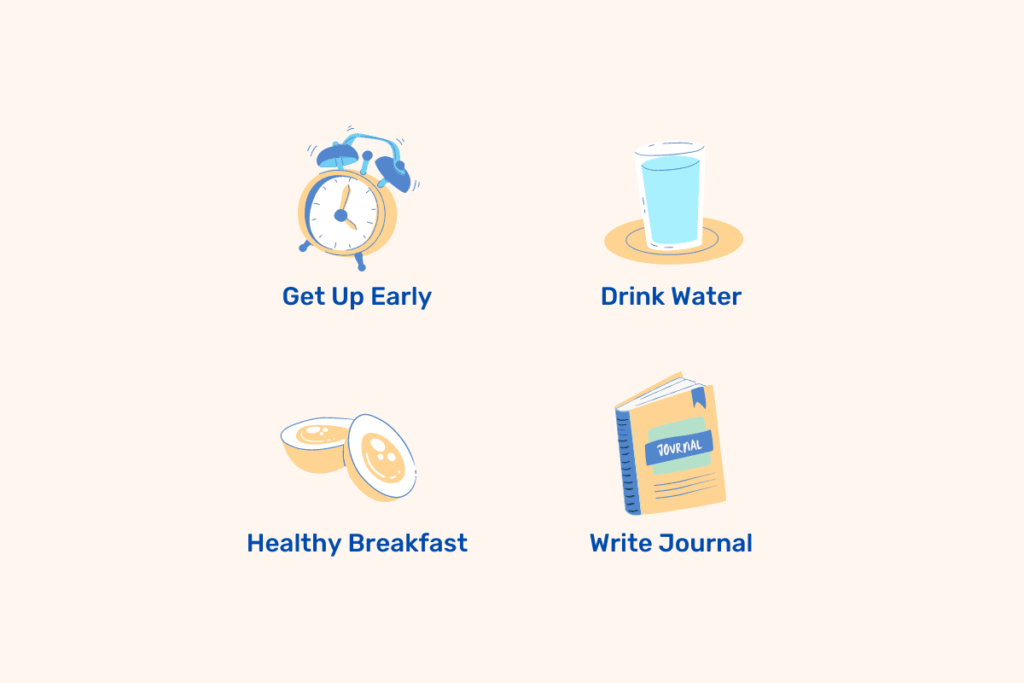
Your habits are the reason you are where you are in life and they are also the key to getting where you want to go. Every goal you set for yourself will only be realized through the habits you cultivate. The good news is that you can easily choose the habits you want to have in your life and put a stop to those you don’t.
How long does it take to form a habit?
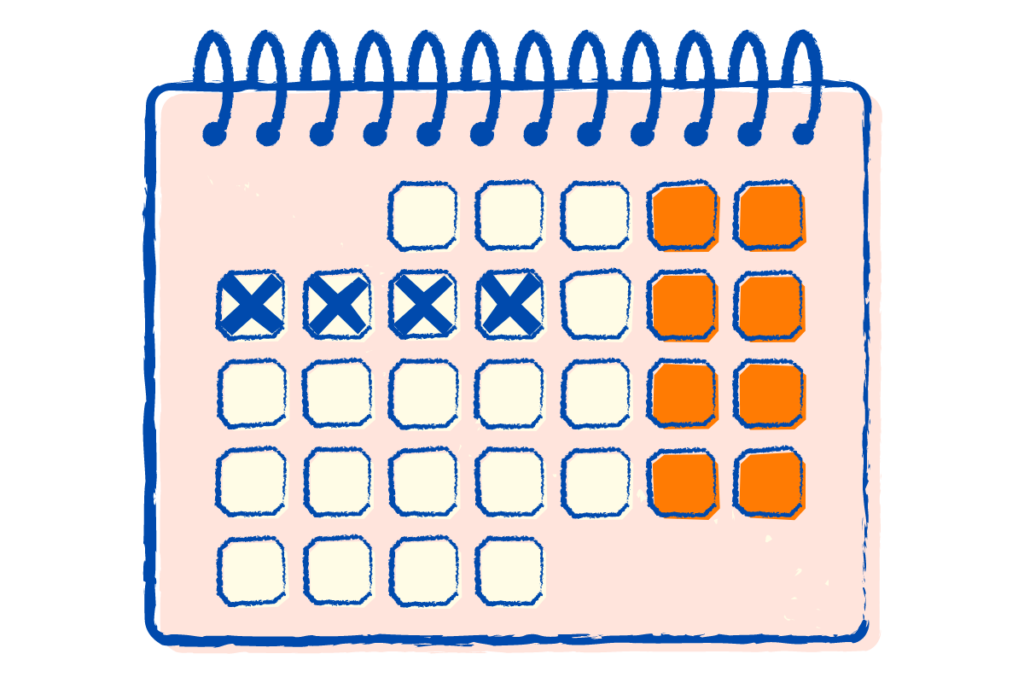
There is a lot of debate surrounding the question: “How long does it take to form a habit?” But the thing is habits can encompass anything and everything and so it is truly impossible to accurately pinpoint nor even generalize how long it takes to make a habit stick. A habit is considered to have been formed when you begin to do it automatically, in other words, when it begins to feel effortless.
But like each habit, every one of us is different and we are in constant flux and that is why our habits and the circumstances around them will also change as life goes on. So, what matters most is not how long it takes to establish a habit, but to know the methods of how to successfully form habits that stick and if necessary, break the habits you no longer want in your lifestyle.
Which is it? 21 Days, 30 Days or 66 Days

For decades now, there has been the widespread assumption that it takes 21 days for a habit to form. However, the truth is that notion is somewhat of a myth. The 21-day concept just happens to be based on one of the oldest and most widespread studies on how long it takes for people to adapt to certain physical changes.
Plastic Surgeon Maxwell Maltz made an observation through his practice that it took at least 21-days for people to stop noticing the physical changes they incurred, a finding that he published in the 1960 bestseller Psycho-Cybernetics. What Maltz was actually trying to say is that it takes 21-days at the very least for a new mental image of oneself to gel, after having undergone plastic surgery.
Somehow, this concept stuck as the regularly accepted threshold for how long it takes to make a habit stick. These days, there is a greater understanding that it is impossible to pinpoint a specific time it will take to form or break a habit. The 21-day concept has since been expanded into the 21/90 rule, which is: do something new consistently for 21 days to get used to doing it and then continue for another 90 days to make it a regular part of your routine.
While three weeks is an easily achievable timeframe to commit to starting something new, there is no guarantee that a habit will have concretely formed by then. But the good news is that some habits can become regular practice fast. In fact, they can stick from the moment you set your intentions and begin to do them. What matters most in making a habit a permanent part of your daily or weekly routine is how easy and rewarding you make them be, which is the actual key that will motivate you to repeat them.
More recent studies on habit formation over the past decade have concurred that it takes an average of 66 days for a new behavior to become automatic. This however, is just a catchy average in all honesty as studies have shown 2.5 months is a reliable average, while yet another had a spanframe of 18 to 254 days for a habit to form. So, what this proves is that it is tough to pinpoint the actual timing it will take for someone to start or stop the habits of their choosing.
Why we say 30 days…
So, we know that it is near-impossible to actually guarantee that someone will form a new habit in any particular specific amount of time. But, what we do know is that repetition and continuous tweaking to optimize the habit will go a long way to making it stick.
In 30 days, which conveniently wraps up into a neat little near-month timespan, anyone can easily make significant progress in optimizing the habits they want to form or break. By challenging yourself to devote 30 days to take on a new habit or more or break and replace those habits that you know aren’t good, you can definitely make noticeable headway. Once you can see the progress you have made, which is easier when designated to a specific timeframe for tracking, you will want to continue on your own or decide to take on another 30-day habit challenge.
The thing is, we will always have habits we want to include or remove from our lives, because that is just the way life is: in constant transition. By being in constant momentum with cultivating positive habits for your life, you will feel good. And isn’t that the entire aim of choosing the right habits? You can literally manage your happiness if you develop the right habits and stop doing the bad ones, which you will find is surprisingly easier than you ever could have imagined.
How to make and break habits
| How to Form a New Habit | How to Break a Bad Habit |
| 1. Start Small: Don’t overwhelm yourself | 1. Get in the Mindset: Put it on a “Not To Do” list |
| 2. Track the Habit: Use a habit tracker to mark success | 2. Set Up a Strategy: Give yourself a jumpstart |
| 3. Make it Easy: Don’t depend solely on willpower | 3. Make It Hard to Do: Don’t leave it all up to willpower |
| 4. Reward Yourself: Set up a goal and a gift for when you succeed | 4. Accountability is a Key: Find a sponsor-like buddy |
| 5. Set the Stage: Make preparation part of the process | 5. Have an Emotional Why: Make the reasoning really count |
| 6. Use Technology: Set up alarms and automatic systems | 6. Don’t Fall Back Twice: If you fail once, don’t fail again |
| 7. Troubleshoot: Problem-solve the habit with an error log | 7. Troubleshoot: Use an error log to problem-solve the bad habit |
| 8. Accountability Buddies: It’s much easier to start a habit with others | 8. Love Yourself: Be grateful and forgiving for peace of mind |
How to have a new habit
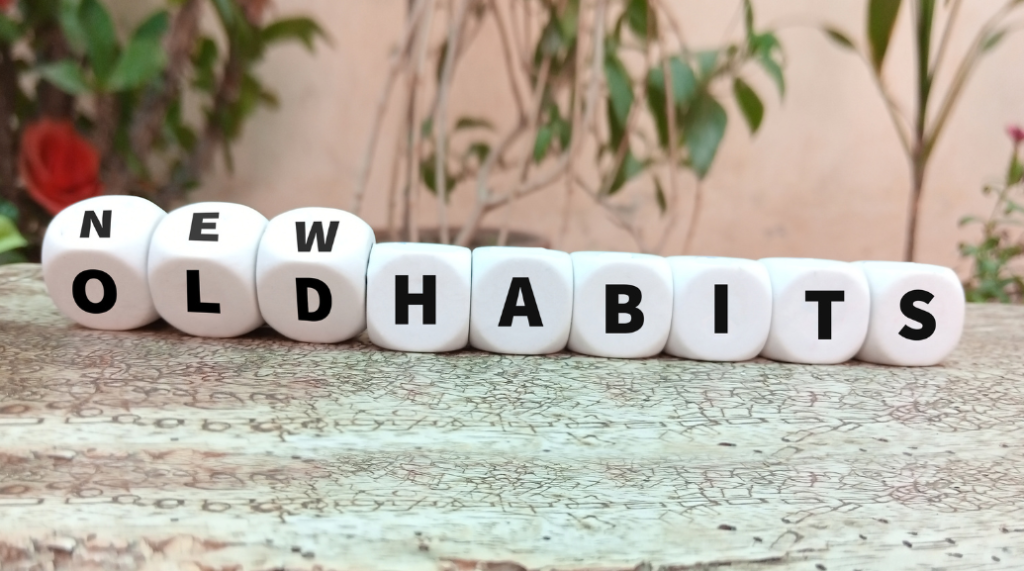
There are a lot of great techniques that make forming and keeping a new habit easy, which have been laid out by the masters on habit formation and especially in books such as The Power of Habits, Tiny Habits and Atomic Habits. But to put it simply and in summary; doing the following steps will set you up for success in finally making those habits you have always wanted a permanent part of your lifestyle.
What Does “Starting Small” Mean?
One of the most important factors in forming a new habit is starting off with an easily achievable step. In other words, it is critical that you don’t overwhelm yourself by biting off more than you can chew. If you start with a habit you can easily do, you are setting yourself up for success.
Whereas if you take on too much in the beginning, you are setting yourself up for failure. So start with something that is challenging but not overwhelming, which is a saying shared by my business partner that I recall regularly with the acronym CBNO. Rome wasn’t built in a day and someone who is out of shape shouldn’t compete in a marathon on their first attempt to run.
Let’s say running is a new habit you want in your life, but you haven’t been active in awhile. Well then starting off walking is the sensible way, if not the only way, to get started. If you started off running instead, well you could end up injuring yourself which would make it near impossible to stick to the new habit of running.
So, in the beginning it is important to strategize the different stages of the habit you want and to start one step at a time. And in the meanwhile, mentally make each step, no matter how small, a part of the process and begin basking in your achievements and immediately enjoying the journey of cultivating the new practice you want in your life.
Similarly, we can all get pumped up to change our lives and might choose half a dozen or more new habits we want to start at the same time. While it is great to be motivated, it is vital to not get yourself down if you don’t achieve what you set out to. Of course everyone is different, but the general rule laid out by the experts is to start with one to three habits at the most and to tack on the additional habits once the initial ones have begun to take hold.
This is simply just another way to ensure you continue to rack up wins rather than feeling like you may have failed simply because you made things too challenging for yourself. In other words, however you choose to start, just make sure you don’t overwhelm yourself.
Habit Tracking is How You Hit Goals

It is “Business 101” that what you measure is how you improve. If you don’t track your progress, how will you ever know whether or not you have succeeded? Tracking your habits is how you will prove to yourself you are achieving progress. Similarly, habit tracking is also the only way to know you have reached a goal. The bottomline is: habit tracking ensures transparency, which is how you will know you have made achievements and also allows you to clearly see when you don’t. Clearly seeing your success or lack of achievement allows for the opportunity to gain insight on the reasons why you are succeeding or failing.
It is this clarity that enables us to shape our habits accordingly, because we gain an understanding of our personal roadblocks and positive trends, which both provide wisdom on how to make continuous adjustments for constant improvement.
So, the easiest way to make a new habit stick is to track your habits with a habit tracker, because like the MH Habit Tracker, they have been designed specifically for the purpose of cultivating habits. Setting goals and reaching milestones are much more easily achievable with a habit tracker and even simply checking off each habit you complete as you complete them, gives you the opportunity to celebrate every little step of achievement, and certainly every streak, which feels great and isn’t that kind of the whole point of having new habits to begin with?
How to Make Forming a New Habit Easy
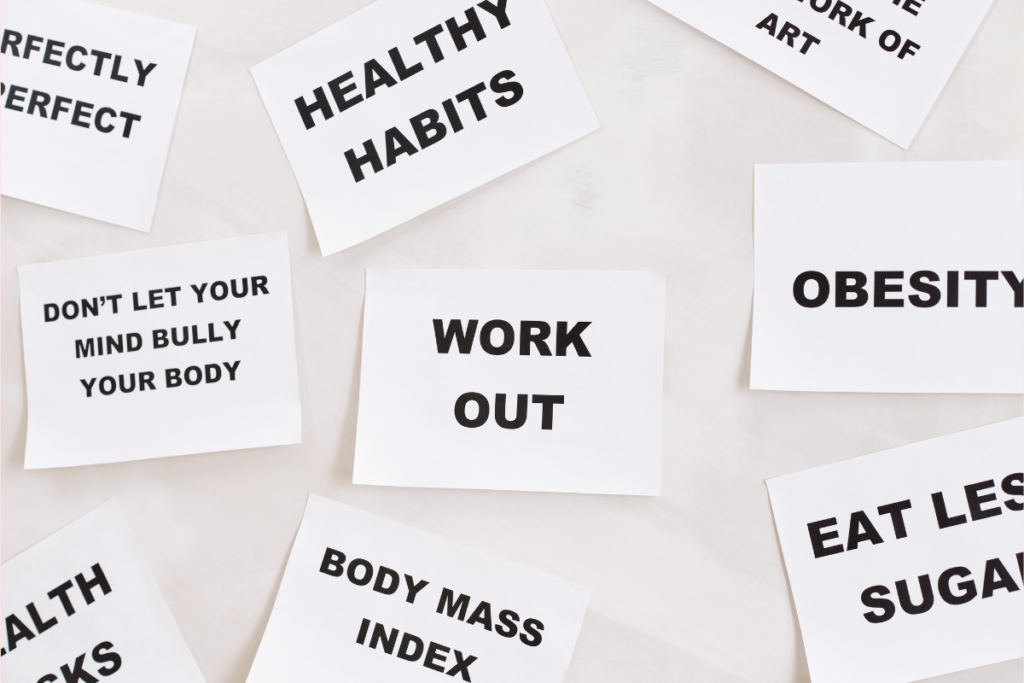
The truth is doing something out of sheer willpower is hard. But, having a new habit doesn’t have to be. One thing you can do that makes starting a new habit much easier is controlling the environment around it. This means not making your new habit solely a test of willpower, but instead adjusting your environment, your schedule or anything you can do that helps bypass having to rely solely on willpower.
There are creative ways you can set yourself up for success and not have to test your own nerves of steel. First of all, give yourself a break by being prepared for challenging situations or secondly, simply avoid them altogether. This is especially relevant for the initial weeks of habit formation.
While the end-goal is to make a new habit become automatic and no longer necessitating any additional effort to do it, the same can be said for alleviating the reasons you weren’t doing the habit to begin with. As we want to make the new habit stick, we need to pry ourselves away from the automatic actions we have become accustomed to that are actually hindering us from having the habit we want.
In practice, this means being aware of your personal pitfalls and taking any steps you can to make the new habit easy. In other words; to make a new habit easier, don’t leave room for temptation to fail. Take for example the desire to start a meditation practice. Well if you truly want to meditate, you should turn off your phone. If you want to go to sleep earlier then don’t eat late. If you want to start walking in the morning when you wake up, then don’t check social media before you do.
Another solid example of how to make a habit easy through preparation versus sheer willpower would be the example of someone wanting to lose weight. Doesn’t it make sense that eating healthier would be easier if you had healthy snacks you enjoyed on hand. In the same vein, eating healthier becomes so much harder if you have a cupboard filled with unhealthy snacks. So get rid of the bad, bring on the good and just make it easy for yourself so that you don’t have to draw solely upon your willpower.
Set Goals and then Celebrate Your Success
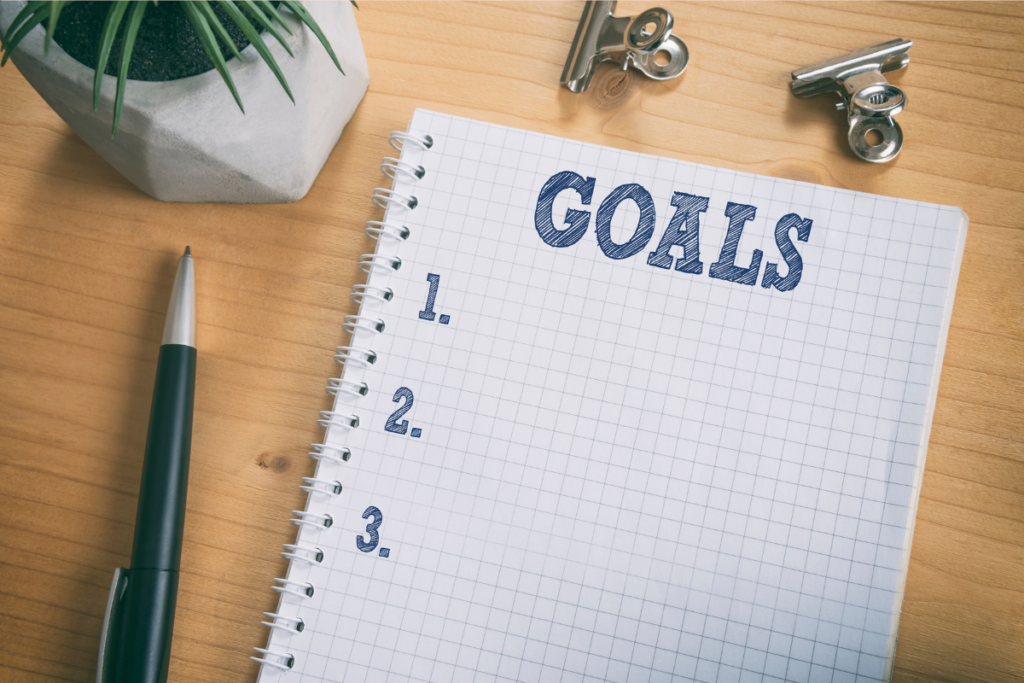
Isn’t the whole point of having new habits to feel better? While incorporating a new habit in your life begins to feel great the moment you start doing it, setting goals for yourself to mark certain achievements actually makes the process more fun, even exciting perhaps.
Furthermore, if you set yourself up with reasonable goals to reach, whether it be hitting a streak or any sort of milestone then why not reward yourself for your success. Give yourself a pat on the back or take that victory lao, because you deserve it! So find a way to healthily reward yourself so you can reap in the well-deserved sense of achievement, which just works to add yet another level of feeling great.
As the whole point of the new habit is to feel good then doesn’t it make sense that you would come back for more, the better it feels. So, just start feeling good, set goals no matter how small and give yourself the freedom to celebrate every single level of achievement that you can simply because you deserve it.
This reward can be as simple as a symbolic gesture such as a shout out to yourself or a jump for joy or it could be something to treasure such as any physical item you might want, which actually multiplies the joy in reveling in success as you will recall your achievements whenever you see it.
For example, if you were to buy yourself a pair of sunglasses after successfully completing a 30-day streak of a new habit, you will most likely associate your sunglasses with success, which means every time you put them on you would get to recall your achievement, which trust me, will feel pretty amazing.
Set the Stage and Dress the Part

One of the most effective ways to make starting a new habit less difficult is to design your environment for it. Similar to controlling your environment, if you are fully prepared for the new habit, then actually doing it will be that much easier. The more you can design your life to accommodate the new habit, the less hurdles you have to overcome. So making preparation part of the process is just good sense, but the best method to do so is beforehand. As a restaurant prepares many of the ingredients before they begin a service, it’s extremely helpful to have the stage already set for any new habit.
In practice this would mean if you wanted to start doing yoga at home in the morning, then have your mat easily accessible and the clothing you are going to wear laid out before you even go to bed. Like planning the next day the night before, you will be much more successful if you prep for your new habit as early as possible.
If you leave an inevitable preparation process to the last minute before you want to begin a habit, then chances are you may end up getting waylaid somehow. If you want to get a running start, literally or figuratively then don’t add an additional layer of difficulty to the task by having to find the right outfit and search for your mat in the morning. Have everything ready so you have a running start and can just wake up and do what it is you are really wanting to do.
To further level up a new practice, make it a priority, prep early and dress the part. In the case of doing yoga, wear clothing that is comfortable and that you really love and feel good in, because remember that feeling good is for most the main reason we want new habits in our lives to begin with. If intermittent fasting is something you want to start, then make that first meal and each one after as special as possible. Light the proverbial candle, set the table even if for yourself and seek enjoyment in your new habit as much as possible. And just remember, if you make what you do feel good and even fun, then you are that much more likely to continue doing it.
Use Technology, We Have it For a Reason
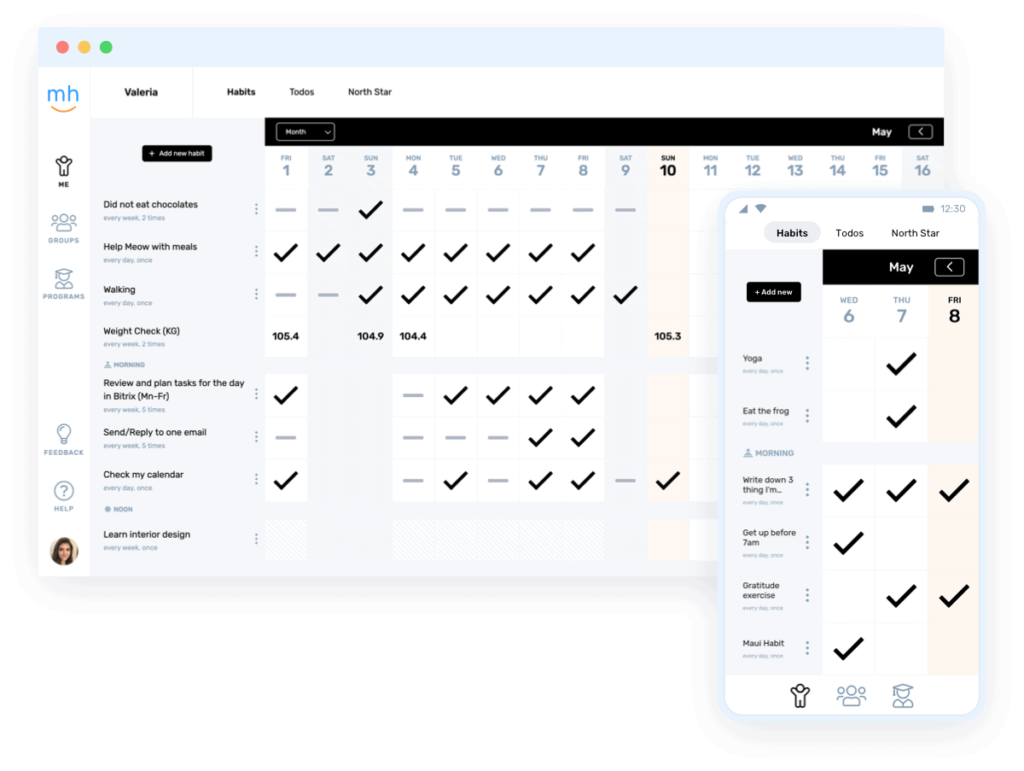
Sometimes starting a new habit can be as easy as just scheduling it in. Luckily, we have a wealth of technological tools that can help us do that. From simply setting an alarm as a reminder to do what you want to do and when can be enough to facilitate your actually doing it.
So many of us start off with the best intentions, but if we don’t actually plan when we are going to do something, then chances are other things that seem more urgent will get in the way. Setting an alarm is an incredibly powerful tool as is scheduling a new habit into a program such as Calendly or Zapier, which also sends out alerts to remind you of the new habit. Or use such programs to restrict scheduling in other activities during the time slot you have allotted for your new habit.
Make Troubleshooting Part of the Process
The best way to cultivate a habit is to constantly ask yourself clarity questions to understand if there are ways you can make the process easier. At MH, we have an error log where you can list what some of the challenges are you face and then right next to that you problem-solve with potential new solutions. The more you can adapt a habit into your lifestyle, the easier it will be to continue doing it.
Being aware that there is always room for improvement and consistently asking yourself how you can do so, will help make a new habit truly stick in the easy and in the hard times. If you find yourself unable to follow through on what you set out to do, don’t be discouraged. See the situation as an opportunity for growth and use that sentiment as a way to as the saying goes: “First, make it work, then make it better”.
Accountability buddies and support make any transition easier
It is truly so much easier to start a habit with others. Having someone to share your success with and receive feedback when you need it is a really important part of personal growth. Many don’t realize that the optimal way to improve self-leadership is with the support and positive reinforcement of peers seeking to advance their own personal mastery skills.
It is not easy to change our ingrained rituals, but when we do there is an immense feeling of satisfaction and joy that we want to share with others. Having a safe and open arena in which to do so, coupled by the opportunity to connect with others and share mutual learning is simply one of the most rewarding activities there is.
How to break a bad habit
“Whether you think you can, or you think you can’t – you’re right.” – Henry Ford
Just like forming a new habit, breaking a bad habit is not as difficult as it seems… It is really just a matter of mindset and having a number of guidelines in place to make the transition easier.
The following are some great tips to set yourself up for success when trying to quit a habit that no longer serves or allows you to function at your best.
Getting in the right mindset
Mindset is the most important factor that will influence whether you choose to have a healthy self-caring lifestyle or one that includes activities that do not contribute to the peace of mind you are striving for.
The Henry Ford quote above emphasizes just how much our attitude determines our success or failure. Let this quote serve as the key to understanding just how important our mindset is in opening or closing any doors we choose to.
Thus, there is no arguing the fact that in whatever it is we want to do, having the right mindset to start off with will serve as the greatest influence in cultivating positive habits and putting an end to those that no longer benefit you.
And so, the following are a series of practices that help to make that mental switch permanent:
Ask your “Emotional Why”
We all have our own reasons for wanting to break free of certain bad habits. In order to have the right mindset, we must have a clear reason for wanting to change. In most cases, the strongest driving factor starts with having an “emotional why”.
Whether we want to admit it or not, our emotions play a huge role in the activities we choose to do. An “emotional why” refers to clearly understanding the reason behind why we are doing things we don’t necessarily want to be doing. In the same frame, it will also be the reason why we will choose to stop. Embrace what needs a negative habit is truly serving and clearly define the emotional reasons why you want to stop it.
In many cases, negative habits are driven by external and emotional factors. Whether it be from a fear of missing out, as the habit might serve certain social aspects of your life to other misguided reasons such as overwhelming stress, knowing what makes you tick and why will help you to find other ways to serve that emotional need.
Remember that as far as we know, you only live once and so letting this notion serve as your guide is a helpful reminder to realizing how you want to live and certainly how you want to be remembered by those you are close to.
Methods such as “The Funeral Exercise”, in which you envision what people would say at your funeral or what you might regret on your deathbed can be extremely insightful into understanding your “emotional why” for quitting and for seeking other ways to satisfy any other needs your bad habits are fulfilling. In other words, it is really important to clearly understand how a bad habit negatively affects you, your environment and those around you.
Have a “Not-To-Do” list
Let’s face it, many of us have certain ingrained habits that just do not serve us or the lifestyle we aspire to lead. And, just like pulling out the weeds of a garden before planting or clearing a space of clutter before cleaning, there may be certain bad habits we want to eradicate from our lives in order to have the time to cultivate the positive habits we do want.
These habits may be deeply embedded into our lifestyles and might even include certain ingrained rituals we don’t even realize are connected to them. Therefore, it is critical to be aware of what the bad habits in your life are and to physically acknowledge them by writing them down on a “Not To Do List”.
Similar to a “To-Do” list, have your “Not-To-Do” list easily accessible and even better visible so that you can be constantly reminded of the intentions you are setting yourself. Your “Not-To-Do” list can include the habit itself and any contributing factors that lead to you falling back into the routine you seek to alter.
Replace the bad habits with good ones
Now that you have listed the habits you no longer want in your life as well as understood the triggers and reasons behind why you are inclined to them, it is then time to devise viable substitutions, which are in essence good habits to replace the bad.
If it’s quitting coffee or consuming it beyond a certain hour, then switch it up with relaxing herbal teas in the evening instead. If having an evening drink is your way of unwinding, you could choose to sign up to a spa or a gym and go in the evenings to relax your mind and body in a healthier manner. Or maybe you want to quit scrolling through your social media accounts first thing in the morning.
In this case, you could decide to go for a long walk or run as soon as you wake up, or simply meditate or do some stretching and yoga moves. Whatever you choose to do in lieu of the habit you are breaking, make it something you will enjoy and want to incorporate in your life because it will benefit you in the long-run.
Many of the bad habits we have satisfy a momentary need, but there are ways to substitute them into activities that will inevitably benefit you in the long-run. Ask yourself your “emotional why” for each habit you choose to break and shape and write it down as a To-Do list that is as easily accessible as your Not-To-Do list.
And, just remember that if the bad habit is hard to break and the new habit you want to replace it with seems equally challenging, the determining factor to switch the balance is momentum and consistency, which are what will give you the confidence to continue and will make the transition easy and automatic in the long-run.
Plan for it and set up a strategy for the process
Writing your intentions down in a manner in which you can easily reference and preferably see helps to set your intentions in stone. But if you set up a strategy and plan for it, then you are that much more likely to follow through. Like anything, strategizing how you will quit and even having a ceremony for it will make your intentions stronger.
If, for example, you want to quit smoking, then you could schedule the date you do so for after a long-haul flight, where smoking is forbidden to begin with; this will make the first stage of the process easier. Or if certain locales or social circles trigger you to want to partake in the habit you seek to quit, then devise a plan to visit other venues and spend time with different friends, at least in the beginning when the hurdle of habit breaking can be more challenging.
Similarly, planning how you will embark on your day without the bad habits and with good ones instead, is what will lead to tangible progress. It is Business 101 that you can’t measure what you can’t track, so if you plan your habit transition and actually schedule it in, then you have the ability to check off each day of success and see the progress you have made and pat yourself on the back, or even better reward yourself for it.
Control Your Environment
If you know what the circumstances are that drive you to easily cave to the negative habit you crave then make those conditions harder. Like anything, if you plan the process properly by setting up hurdles for the habit you want to shake then it is simply harder to fall back into the same pattern.
So, switch up the situations that tend to trigger you to fall back on the same routine. This is done by changing the circumstances and environment that drive you to succumb to the habit you want undone.
Let’s say, you want to quit eating fast-food or stop late-night binging, then plan for a healthy meal you will enjoy instead and don’t have tempting snacks stored in your pantry. If you make the habit harder to do, then it makes it easier to quit, because the bottom line is: it will be easier to quit if you don’t depend solely on willpower.
Accountability truly helps
As you will find when you ask yourself what your “emotional why” is behind the actions you take, in most cases we are driven by external factors or are using a bad habit as a crutch to fulfill some other need.
For many bad habits, the driving factor can be a social one and if so, then a great way to satisfy this need in other ways is to actually share your intentions with those around you. Chances are the people in your community will also recognize and understand any bad habit you want to change and so don’t be afraid to tell them or tell anyone.
We as people are social animals and we all inherently want to help others. Embrace this aspect of our humanity and share your intentions with those around you. When you do so, you will likely find the support you might seek as well as the pride you can achieve by serving as a positive example on how to change for the better.
The best way to use accountability to your benefit is to assign yourself an “accountability buddy”, which could be someone that you have designated for sharing your challenges and successes with and can even reach out to if and even better before you are ever tempted to cave in.
Don’t give in to the itch!
Let’s not kid ourselves, quitting a bad habit can be hard, but it is truly best done cold turkey. If you cave into having one cigarette when you are trying to stop smoking, then you are only triggering yourself to have more.
If you seek the rewarding sensation you believe you get from the bad habit, you are only tricking yourself, because you won’t feel good in the long-term for falling off the wagon of your intentions.
If you do however succumb to that itch, which similar to scratching a mosquito bite will only lead you to seeking more, then make sure you don’t do it twice.
Consider repeating a bad habit twice as the ultimate sin to yourself and the goals you have in place, because doing something twice represents a pattern, which is exactly what you have set out to break. If it happens once, chalk it up to a mistake and forgive yourself and perceive the act as an opportunity for learning and to figure out why it happened to begin with.
But no matter what, if you want to successfully make a transition fast, then make it a rule to not return back to doing the bad habit twice.
See troubleshooting as part of the process
Apply the mantra: “Make it work and then make it better” to your habit breaking and shaping efforts and consider constant troubleshooting as part of the process.
Tweaking and optimizing anything we do makes it easier, better and will lead to your continuous success. As our lives continue to change as is the very essence of nature, we can also adapt to find what systems work best for us in achieving the lifestyle we aspire to.
Use an error log for your habits and write down what the “problem” is, ie. the bad habit, then next to it write down possible solutions. This way you can see in plain sight what you may need to alter or switch up on your Not-To-Do and To-Do lists, which will only result in creating even better options for what you are seeking to change.
When the going gets tough
If you find yourself just not able to stick to a habit you wanted to form for whatever reason that may be, there are a number of tools that can help you quickly break a bad habit streak.
- Accountability – tell your group
- Due an Error Log
- The two-day rule
- Restart routine
- Dealing with serious difficulties
- How to remain calm in the face of a storm
- Serenity Prayer and Acceptance
- Gratitude
- Worry Time
- Accountability vs Victim loop
- Problem Solve with Clarity Questions
- Do Something that Makes you Happy
How your keystone habits open every door
There is just no denying the reality that it is your habits that determine everything in your life. Your habits are the reason you are in the current situation you find yourself, whether you are unhealthy or fit, rich or poor. The habits we acquire, whether intentional or not, are quite literally what defines our life and they are certainly how we spend our money, energy, time and love. But most importantly is the fact that your habits are the sole way you will fulfill any of the goals you set for yourself.
Over 40% of our daily actions are not decisions, but habitual behavior. So many people operate on autopilot not realizing that they have the choice to design the life they consciously wish they were living. But it is totally possible and even easy to begin establishing the key habits you want for yourself that can unlock your true potential for living with purpose and open the door to actually achieving everything you want.
There are habits and then there are “key” or “keystone” habits and the difference between the two is this: a keystone habit is one that has a positive ripple effect into other areas of your life. Like a chain reaction, or the domino effect, keystone habits are the ones that positively affect multiple areas in your life and when implemented regularly trigger additional beneficial habits similar to building additional levels on a house.
The power of keystone habits…
First coined by Charles Duhigg in the bestseller The Power of Habit, keystone habits are those activities in your life that have the power to positively transform the way you see yourself, in other words: your self-image.
With consistency and a sense of self-achievement, practicing good keystone habits will inspire you to continuously build upon them by adding new positive habits that are triggered by the initial one. And like leveling up in a game, you will continuously be open to and driven to seek new ways to improve upon yourself through your habits because it feels good.
There are some tried and true keystone habits that positively impact many people’s lives and the first one is exercise. To give an example of how exercise fits into the keystone habit category, when you begin to exercise regularly you then start eating healthier because it just comes naturally. You may start waking up earlier, sleeping better and even dressing differently, simply because it feels good.
But what led to these positive changes in your life can be tied to the keystone habit of having a regular exercise practice. Duhigg even says exercising regularly can make you more focused at work and you end up spending less money on other not-so-beneficial activities such as partying late into the night, because your keystone habit will begin to take precedence.
Healthy habits to live by
Why having a regular gratitude practice is life-changing
The concept of being consciously and actively grateful has somehow fallen to the wayside in our modern-day frame of minds. With the constant news of conflict in the world, the fight for climate change or simply trying to make a living to survive, so many of us feel like we don’t have the time, motivation or inspiration to be grateful for what we do have.
As humans, we tend to focus on the things that are negative in our lives and want to hone in to fixing what we feel is going wrong. In doing so however, we miss out on seeing the bigger beautiful picture that our lives could represent and we waste the precious time that we have on this planet thinking about what we lack, rather than all that we have.
But the thing is, if you are able to even read this right now, then chances are you have something to be grateful about.
As we tend to come from a mentality of lacking, and if not, then we are constantly seeking to gain more, it is easy to lose sight of what we truly value in our lives. One of the best ways to bring meaning to what we do and how we spend our time, is to regularly remember what matters most to us and what we want our purpose in life to be.
However, amongst our busy schedules and social obligations taking the time to actually step away and sit down and think about what we care about can seem tedious or even worse, a luxury. But the truth is that setting aside time to count our blessings as it were, will end up creating a greater understanding of everything we are attempting to achieve and the bottom-line is it just feels good.
When we know what matters most to us, which are those things we are grateful for, then there is a clarity achieved on where we want to progress and how. And, the very practice of gratitude creates a mindset shift, from a feeling of lacking and fear to that of feeling appreciation and love.
Described as both a state and a trait by scientists, who have been researching the practice’s effects on our well-being for decades now, we can achieve both through consciously adopting a gratitude practice and by regularly referring to that state whenever the need calls for it.
Regularly practicing being in the state of gratitude and building this mindset as if it was a muscle is what will make it a trait, which is something we should all aspire to have. This mindset tool has multiple beneficial effects, from allowing us to see things from a grander perspective to choosing how to best spend our energy as well as in problem-solving and in dealing with extremely difficult situations.
Just how a gratitude practice gives one a sense of joy and sufficiency, it can also become a go-to method when you feel sad, stressed or when things just aren’t going right.
How to make practicing gratitude a habit
There are a lot of ways people can incorporate a gratitude practice in their lives. From keeping a journal to writing letters or just citing three things to be grateful for each day to having a gratitude rock, which can serve as a talisman of sorts to hold in your hand whenever you want to recall all of the abundancy that does exist in your life.
Keeping a gratitude journal
Taking some time each day to actually list the reasons you are grateful is a great way to start practicing this mindset. While there are a number of excellent “gratitude journals” available, which give thorough guidelines and provide various applications to best understand what to list, it really comes down to just needing a pen and paper or not even, as the list can also be compiled in a smart doc or in a smart phone notebook.
It’s okay to list the same reasons to be grateful everyday as the point is not seeking creativity but simply reminding oneself of what matters most in our lives.
Write down three good things
Three Good Things is a method that was created by psychologist Martin Seligman, who is also coined the “father of Positive Psychology.” Seligman suggests the practice to reverse “learned helplessness”, which is the psychological state of believing that if something bad has happened repeatedly, that it is bound to happen again.
In his “What Went Well” method for treating this way of thinking, Seligman advises setting aside some time at night to write down three things that went well during the day and to reflect upon how it made you feel and why you believe the event happened.
Compose a gratitude letter
Giving the gift of gratitude by composing a letter, that you don’t have to actually send, is an insightful way to understand your love and admiration for something or someone in your life. Similar to writing a letter forgiving yourself or someone else, the practice of writing a gratitude letter provides a valuable point of reference to reframe any situation and to express your appreciation in words.
This gratitude letter could be to yourself or to a person who bestowed kindness upon you that you haven’t yet thanked but want to. While the practice in itself is extremely rewarding, taking the opportunity to share your gratitude with someone else, if you do decide to share the letter, will be one of the most fulfilling exchanges you can have with another person.
Carry a gratitude rock
Despite the name, a gratitude rock can be any sort of item, such as a pebble, a crystal or a bead. Ideally, a gratitude rock will be small enough to fit in your pocket and big enough to remind you of its presence. You can make a regular practice out of holding it in the morning or at night to mentally count all of the positive things in your life, or what happened that day and what you are thankful for at that moment.
In addition, if you keep it on your person at all times, such as by carrying it in your pocket, a gratitude rock can serve as a physical reminder to adopt the state of gratitude whenever you feel it or see it. In times of stress, similar to worry beads, you can hold the rock in your hand and recall all that you do appreciate and when done regularly, it will increase the time you spend in the grateful state.
This practice is not about comparing your life to others, nor is it about seeking any precise outcome, it is just a truly positive mindset and lifestyle hack to ensure your thought processes are coming from the right perspective.
We as people tend to operate with a negativity bias due to our brainwaves being triggered to a higher degree in undesired situations. But the thing is, most if not all of us, will have a lot more to be grateful for than upset about at any given moment, it is just up to us to reset our mindset to remember that.
Most importantly, being grateful is time spent feeling good…
The more we practice being grateful, the more we are able to be in a positive frame of mind. Don’t we all want to recall all of the good events that transpire in our lives, rather than be dragged down by the minute matters that inherently preoccupy our minds.
When we free our minds from negative thoughts, albeit temporarily, it is still time spent in a positive mind frame. While writing what we are grateful has immense value for further reflection on the questions of the “who”, “when”, “how” and “why” good events happen, when it becomes second-nature, clarity questions such as these should regularly come to mind. With practice, eventually you can make being grateful a predominant trait, which will allow you to repeatedly set the stage for positive developments in your life.
Call it the “law of attraction” or simply spending time acknowledging what we appreciate, the census definitely concurs that the state and trait of gratitude positively affects our social, emotional and psychological well-being. But to benefit best from this practice, we need to do it over and over again for it to become a reigning state of mind, making it one of the most important and enriching habits that anyone can add to their lives.
The key habits I live by…
There are three main keystone habits that I have integrated into my life and they are:
- Sweat every day
- Eat the ‘frog’ early
- Plan the day ahead
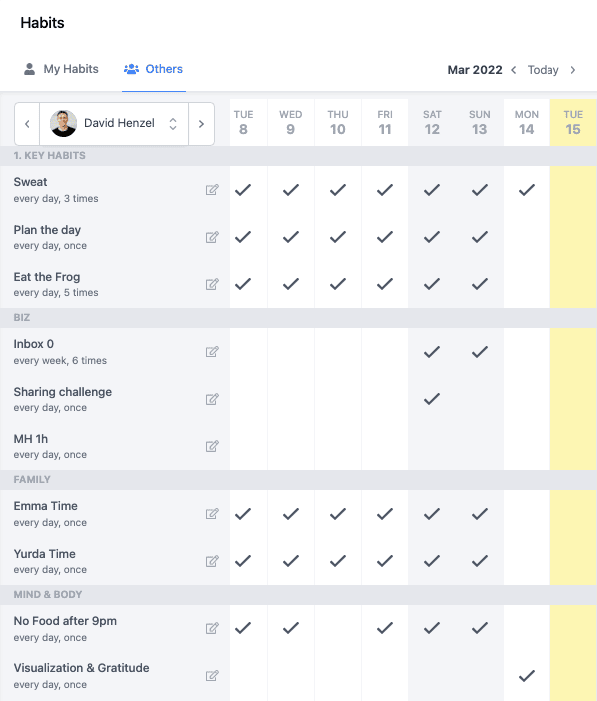
Sweat every day
I used to believe that I did not have enough time in the day to get in a major workout and I wasn’t in optimal physical condition. I was stressed out and overweight and work always took precedence over taking the time to focus solely on exercise.
But, when I began to commit to a regular practice of running and physical training, I realized that not only was I getting in shape and felt great, but I was also able to be more productive at work and more present for my family and community.
Because I know that getting in a strenuous workout is beneficial for me in all of the roles I play, I now restrict myself from eating after 9 p.m., so I don’t ride that second wind of energy that would keep me up later and make waking up earlier that much harder.
Eat the frog
The saying “eat the frog” refers to tackling those pressing tasks that absolutely need to get down and weigh on your mind until you do so, whether you actually want to or not. We all have frogs and we all need to eat them daily if we want to make sure we are constantly getting the stuff we need to get done actually completed. Call it procrastination, or maybe you dread the task at hand, but whatever it is that you know you need to do eventually you should just do as soon as possible.
Just “eat the frog” and eat it early. Because the earlier you get this necessary task done, the earlier your mind is freed from the burden of having to think about it. Like the analogy of holding a glass of water. It’s only heavy if you hold on to it for a long time.
Similarly, ships only sink when they fill with water. In other words, if not eating your ‘frog’ is going to weigh on your mind, then it just makes sense to swallow it and get the job done as soon as, and especially as early in the day as possible.
Plan the next day
To eat the frog and get in a good workout, nevermind all of the other obligations life entails, I know I need to actually schedule the activities I want and need to do into my calendar otherwise work developments and other obligations will always take precedence.
But in addition to planning ahead, I have found that planning out the next day the evening before it begins is the ultimate way for me to get a running start the next day, literally and figuratively. I set aside the time each evening, by also scheduling the planning time in, and then I sit down and I prepare my schedule and calendar for the following day.
This way, when I wake up the next morning, there is no question of what I am going to do next, as it has already been determined, defined and planned for at a time when I was relaxed and had a clear mind to recognize what my exact priorities will be.
What are some of the most transformational keystone habits?
- Exercising regularly
- Eating healthily
- Waking up early
- Meditating
- Doing yoga
- Making the bed in the morning
- Journaling
- Tracking your spending
- Not eating late at night
- Getting a restful sleep
- Planning ahead
- Asking yourself clarity questions
How to make your keystone habits work for you…
Build momentum because it builds confidence
Incorporating a new keystone habit into your life may sound like a challenge, but there are a number of methods to make it easy. First and foremost, everything gets easier with practice and this knowledge alone can help you push on through the initial stages.
Once you have gained momentum, you will no longer need a push to keep going, because the action or habit that you have chosen for yourself will inherently begin to feel good. Constant practice builds skill and confidence and that will be enough to drive you to continue. So all you need to do is just do it and then do it over and over again.
Track your progress – it will help you tweak things
Knowing where you stand is always a good thing. There is a reason all of these smart devices and apps exist for tracking progress, especially when it comes to physical activities, and that is because your success becomes clearly visible and if not, then you know it is time to think of ways you can better optimize the process.
Habit trackers, and especially those with metrics and that show trends can give you a visual sense of your success, which feels wonderful but tracking no progress is also important to ask yourself “Why?” and begin making adjustments on the “How?” of the new habit.
Be your own coach and ask yourself clarity questions
It is really important to continuously, if not daily, ask yourself questions that will provide insight into how something worked out and why something didn’t. There are a number of thought-provoking clarity questions that you can ask yourself, such as “What are the three biggest problems?”, “How can I reduce uncertainty and provide direction?”, “What should I start or stop?” and “How does this habit provide value?” are just some of the questions you can ask yourself to optimize the habit formation process.
Seek external benefits and ways to provide value
If your new keystone habit feels good from the start for additional reasons then you are already well on the way to maximizing the benefits of having positive keystone habits. See if there is a way you can combine a number of benefits of the new practice and you will be more driven from the start. One of the greatest motivators is always being of service because it just feels good.
So, if you want to start running for example see if you can spend time with a friend doing so, or pick up litter you see on the street see if there is a way that you can help others, do good or see things differently so you can truly enjoy the process.
Start stacking more good habits
The major differentiating factor of a “keystone” habit is the fact that it lends to easily being added upon, whether purposefully or inadvertently. In many cases, the keystone habit will inspire you to take on other new beneficial practices, such as in the case of running, maybe you will start showering and dressing up better or begin implementing a self-care routine such as a weekly massage.
In planning the night before, as you are the one dictating your next day, you may start to actually schedule in those other habits you want to include in your life such as having a daily yoga or meditation practice or spending special quality time with family and friends.
For example, you could also start celebrating your success of “eating the frog early” with a journaling or gratitude practice. The key takeaway is if you connect the new habit to the keystone habit in some way then it makes for an easier and more fluid transition to do it with regularity.
To level up, make your keystone habits automatic
Once the initial keystone habit becomes habitual through constant repetition, you begin to do it on autopilot. If something is habitual, i.e. done in repetition, it means that the habit has stuck and you no longer need to think about it in the same manner nor motivate yourself to do it. You just do it, because it has become habitual. For me, this is like my gratitude practice.
I don’t have to think about it or plan for it, I now just do it consistently as a part of my daily routine. And what this means is that when you have one habit down pat, your mind is then free to start conjuring up the next good habit that you can cultivate and begin implementing as well.
With momentum, that new habit will also become second-place and inherently a part of you and then you can start afresh with another new habit until stacking all the good habits you want in your life just begins to happen automatically in its own natural progression.
Intro: why use a habit tracker
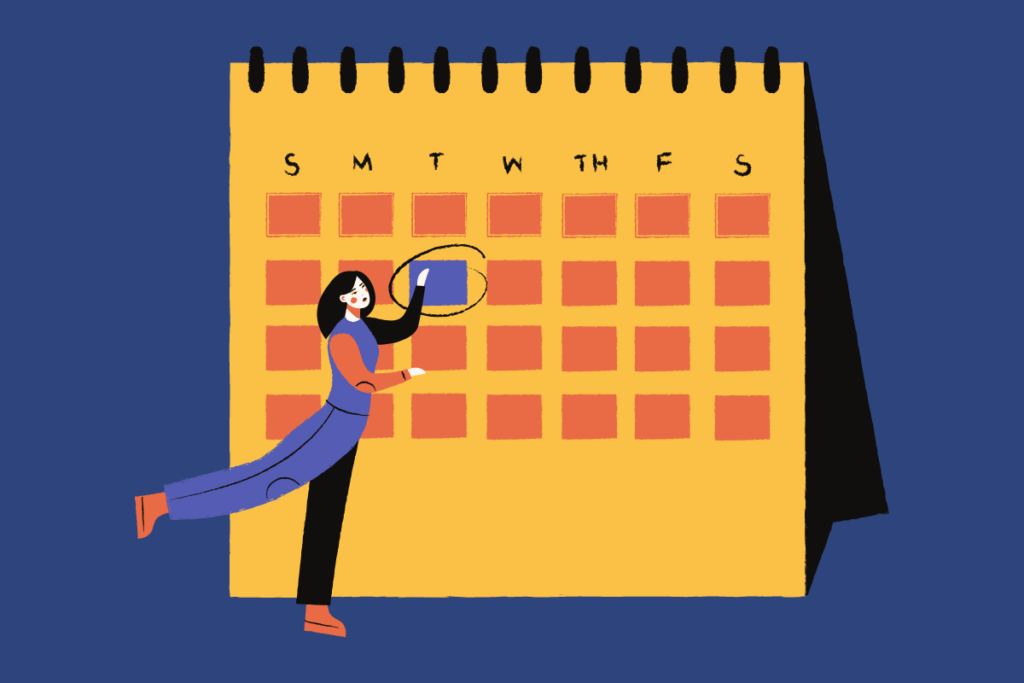
It’s ‘Business 101’ that “What you measure will improve”, but to measure anything, we first need to track it. This is why, hands down, the best way to introduce new habits is to track them and then use that information to measure how those habits work for you and adjust and improve upon them accordingly.
Using a Habit Tracker is absolutely the most beneficial tool to begin any new habit. First of all, a habit tracker forces you to clearly define the habits you want to have. Having clearly defined habits, makes it possible to set goals and see proof of your achievements.
By checking off a habit, each time you have completed it, you are able to clearly see when you have broken personal records, which becomes a reason to celebrate and reward yourself. This sense of achievement, which you can even start to feel the very moment you begin adding new habits, will entice you to repeat the action because it feels rewarding.
Similarly, if you find you are not hitting your target, having a habit tracker enables you to clearly see if something is not working. When you regularly check off the habits you have completed, your results become completely transparent and if you are not hitting your goals then this transparency leads to troubleshooting.
Figuring out what habits work best for you and the when, how and why of it all is actually one of the most important keys to successfully cultivating a new habit. This is why there is also a benefit to seeing when you don’t succeed, because tweaking a habit to work for you is how you can eventually actually make them stick.
The benefits of using a habit tracker
- Having clearly defined habits
- Makes it possible to set and achieve goals
- Allows for transparency and troubleshooting
Why the MH Tracker is special
The MH Habit Tracker is an easily applicable online software tool where you can add habits you want to include in your life and schedule them into your day, week or month and according to the time of day of your choosing. So it serves as a daily habit tracker, weekly habit tracker and monthly habit tracker all compiled neatly into the same habit tracker template.
The MH Habit Tracker gives you the option to check off a completed task or enter a dash for any day you skip a habit. It has also been designed to easily allow you to track a metric, trend and records you have accomplished, which works to give further incentive. Trust me, seeing that you are approaching or have achieved a record streak can provide enough motivation alone to push you to continue.

When was the last time you hit a habit streak?
When you check off your habits each time you complete them and are clearly aware that you are about to reach a 30-day streak, you tend to just do it. At that point, it becomes almost easier to do the habit than not. Trust me, completing a month-streak or any milestone you set for yourself will feel amazing afterwards. And it is your habit tracker that is the very tool that will show you when you have achieved your goals.
But what makes the MH Habit Tracker software truly special is that by being simple and clear in its format and easily accessible for viewing and reviewing, it offers full transparency for you and anyone you want to share it with, including and especially your accountability buddies.
Not only is this a great way to share your success when you reach milestones, but the visibility of your progress leads to accountability for yourself and in the eyes of your accountability buddies, who can help you figure out what is not working and why.
The positive peer pressure and insight offered by changing your habits with like-minded goal-oriented individuals is an indispensable part of the Managing Happiness method and it is the MH Habit Tracker that makes it all possible.
How to use the MH Habit Tracker
- Easy-to-use habit tracker template and software
- Accessible anywhere online
- Schedule in habits
- Plan time of day and frequency
- Check off each habit when completed
- Track your progress
- Share your progress for feedback
- Tweak according to insight gained
How many habits should you track?
The truth is there is no concise number to the amount of new healthy practices you may want to implement in your life. It really is all up to you. But there are some guidelines offered by experts in the field that say to start small and with no more than three habits at a time.
Do you struggle with keeping up with your habits?
People can get ahead of themselves by embarking on changing a dozen things at a time, but we know that starting off too big can quickly lead to burnout. What matters most is being able to check off that box on your habit tracker that says you have completed the task you set out for yourself and the best way to do that is by making that task easily achievable.
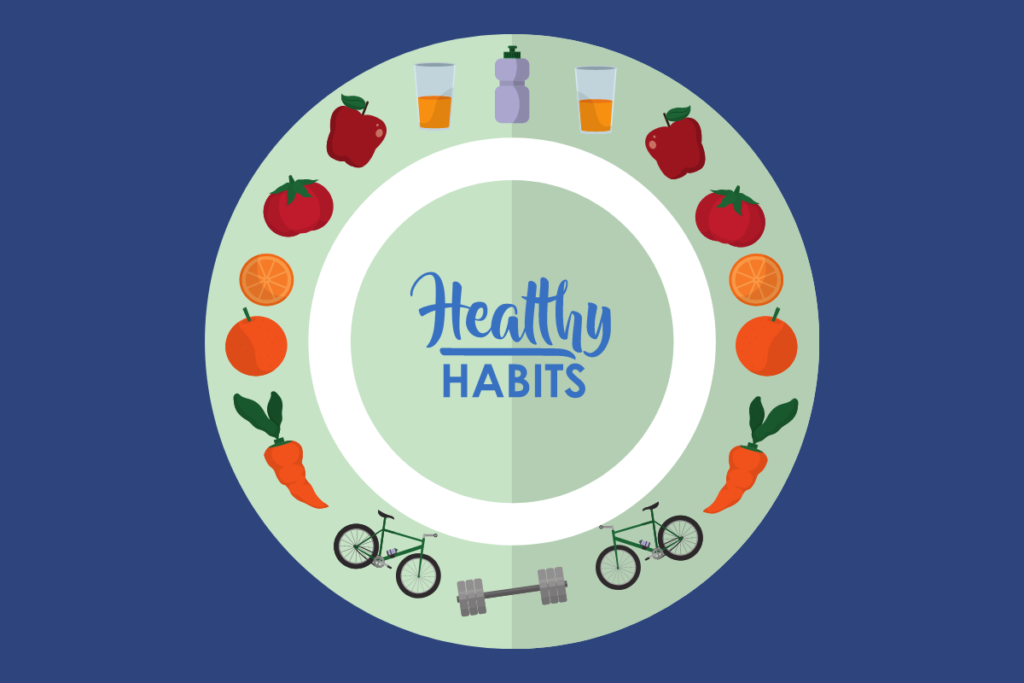
So, whether it’s one, three or more habits you want to incorporate in your life, what matters is that you do them and that they are beneficial. This in itself will make you want to come back for more, and eventually make the habit automatic, which then means you are ready to tack on even more positive practices.
Finding three key habits that you know will positively influence your life is a strong way to begin changing your lifestyle. Key habits, aka keystone habits, are those habits that have a ripple effect into other areas of your life and can serve as a building block on which to build additional layers of beneficial habits onto the original one.
Examples of keystone habits can be as simple as making your bed first thing when you wake up, going for a run in the morning, planning the next day or not eating after 10 p.m. Keep your new habit simple, achievable and rewarding on multiple levels including answering the emotional why, which in many cases is the true reason you want to make changes in your life. Consistency is the true key, so keep the number of key habits you want to include into your life small to see lasting results.
It can be exciting to embark on personal growth, especially when you have the tools and methods laid out in front of you that you know will guide you. So, for this reason don’t feel you have to limit yourself to any number, just use the three key habits rule as a guideline. Should you want to adopt more healthy practices then do so, just make them as easily doable as possible and if not, you now have the knowledge that you can start smaller at any time.
Eventually, your new habits will become an ingrained ritual and you may find you no longer have to track it, because it has become automatic. That is when you can begin replacing the habit that is ingrained with new habits to track in your habit tracker.

